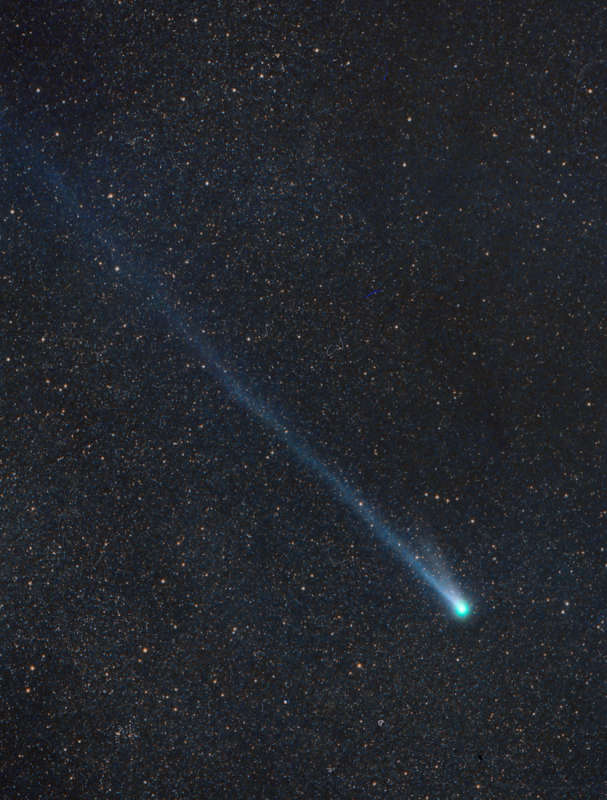
|
Credit & Copyright: Gerald Rhemann
Explanation:
A Halley-type comet with an orbital period of about 133 years,
Comet 109P/Swift-Tuttle
is recognized as the parent of the annual Perseid Meteor Shower.
The comet's last visit to the inner Solar System
was
in 1992.
Then, it did not become easily visible to the naked eye,
but it did become bright enough to see
from most locations with binoculars and small telescopes.
This stunning color image of Swift-Tuttle's greenish coma,
long ion tail and dust tail was recorded using
film
on November 24, 1992.
That was about 16 days after the
large
periodic comet's
closest approach to Earth.
Comet Swift-Tuttle
is expected to next make an impressive
appearance in night skies in 2126.
Meanwhile, dusty cometary debris left along the orbit of
Swift-Tuttle will continue to be swept
up creating planet Earth's best-known July and
August
meteor shower.
|
January February March April May June July August September October November December |
| ||||||||||||||||||||||||||||||||||||||||||||||||
NASA Web Site Statements, Warnings, and Disclaimers
NASA Official: Jay Norris. Specific rights apply.
A service of: LHEA at NASA / GSFC
& Michigan Tech. U.
Based on Astronomy Picture
Of the Day
Publications with keywords: comet
Publications with words: comet
See also:
- APOD: 2025 December 1 Á 3I ATLAS: Tails of an Interstellar Comet
- APOD: 2025 November 25 Á Comet Lemmon and the Milky Way
- 3I/ATLAS: A View from Planet Earth
- APOD: 2025 November 17 Á Comet Lemmons Wandering Tail
- APOD: 2025 September 30 Á Comet Lemmon Brightens
- APOD: 2025 September 29 Á Two Camera Comets in One Sky
- APOD: 2025 September 26 Á A SWAN an ATLAS and Mars
